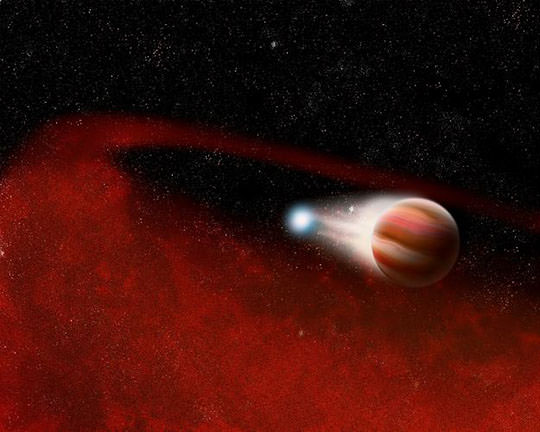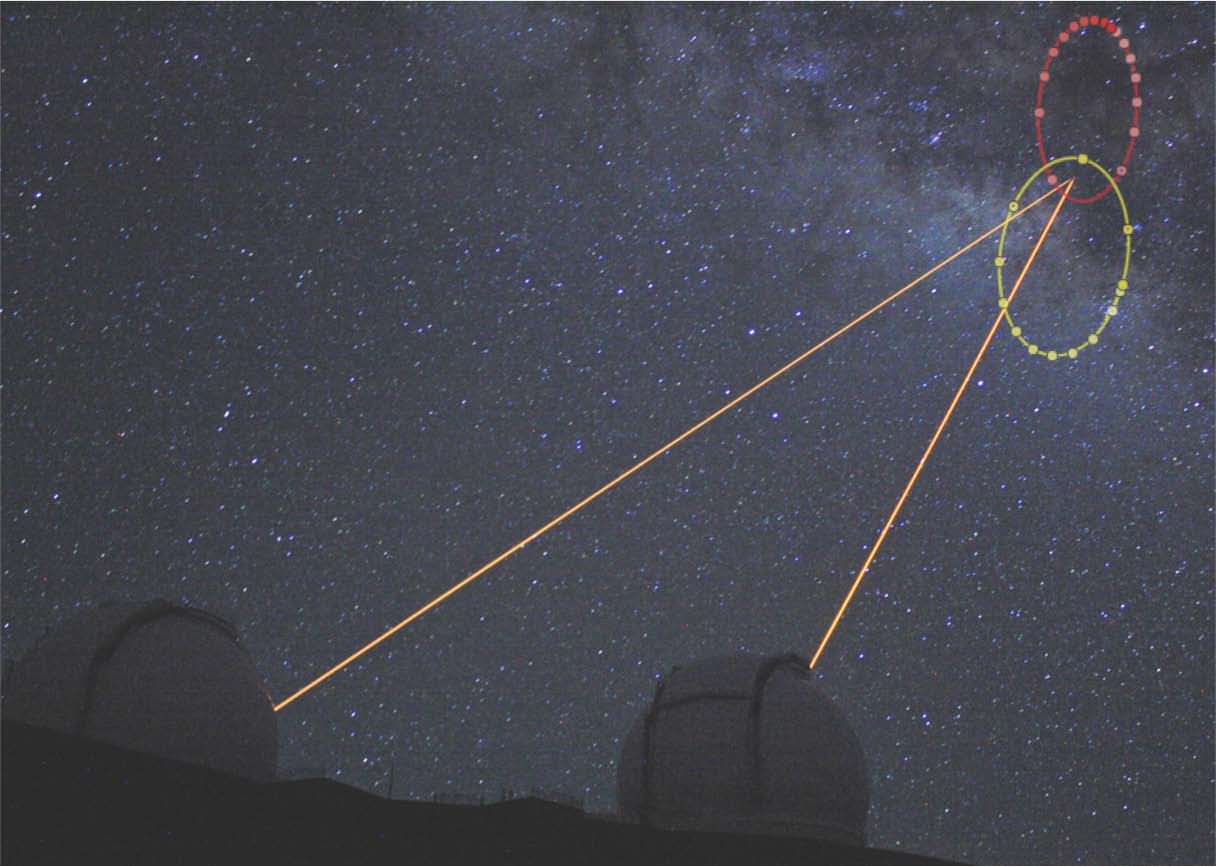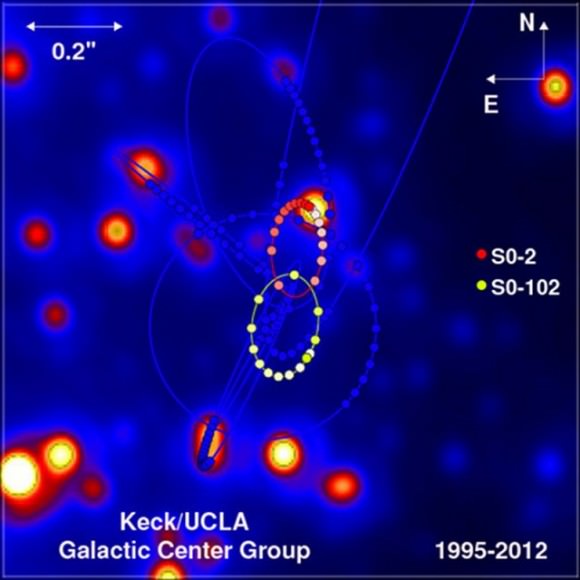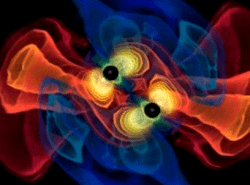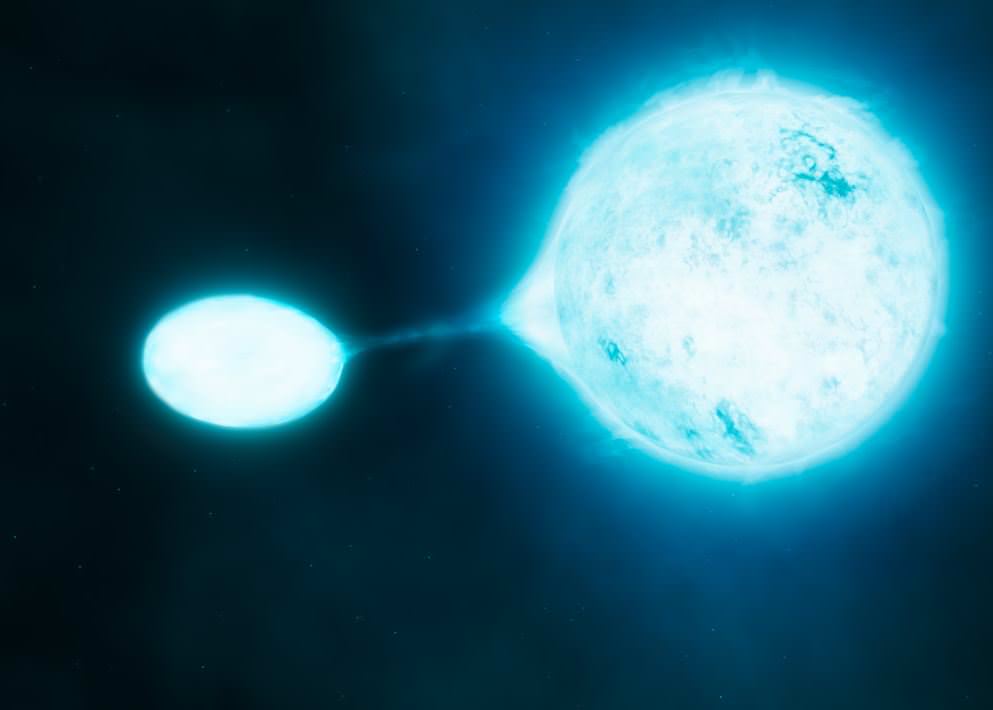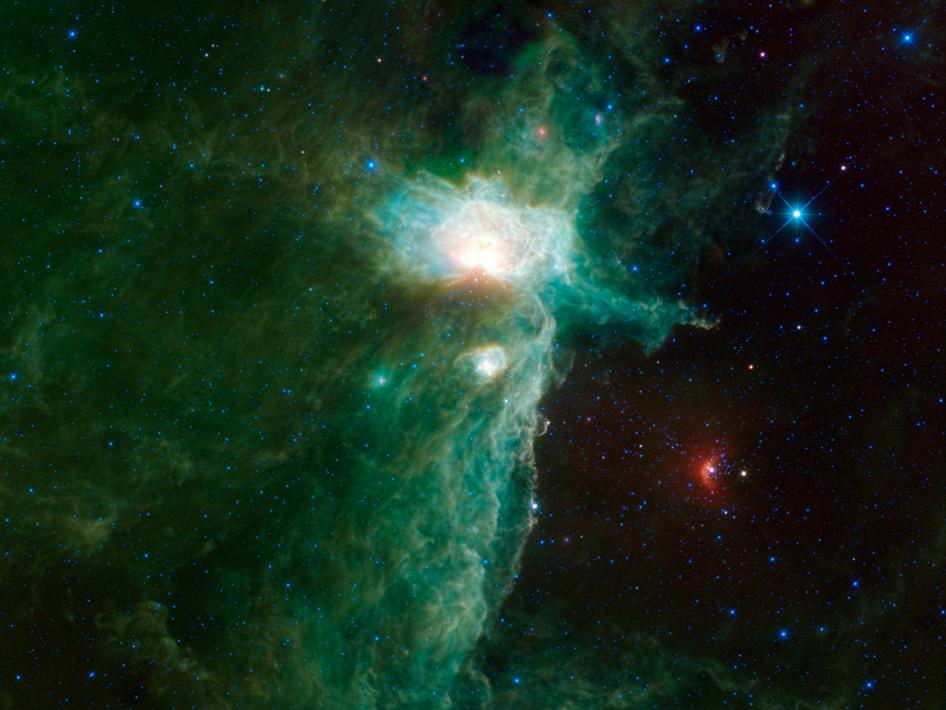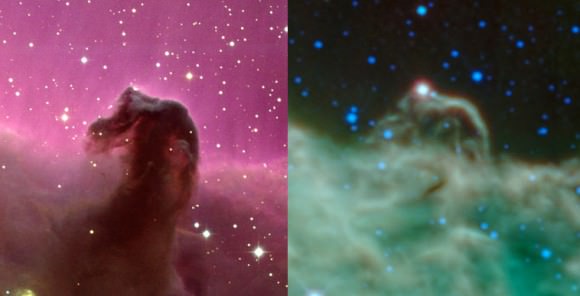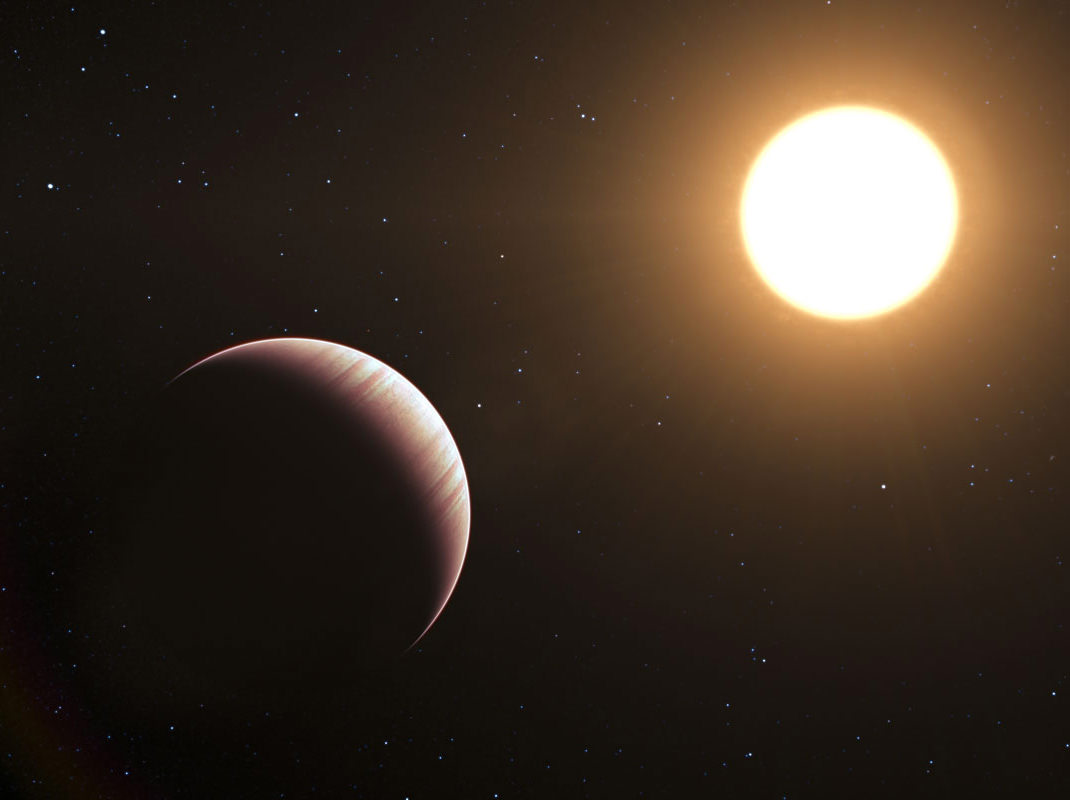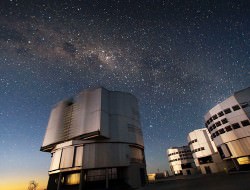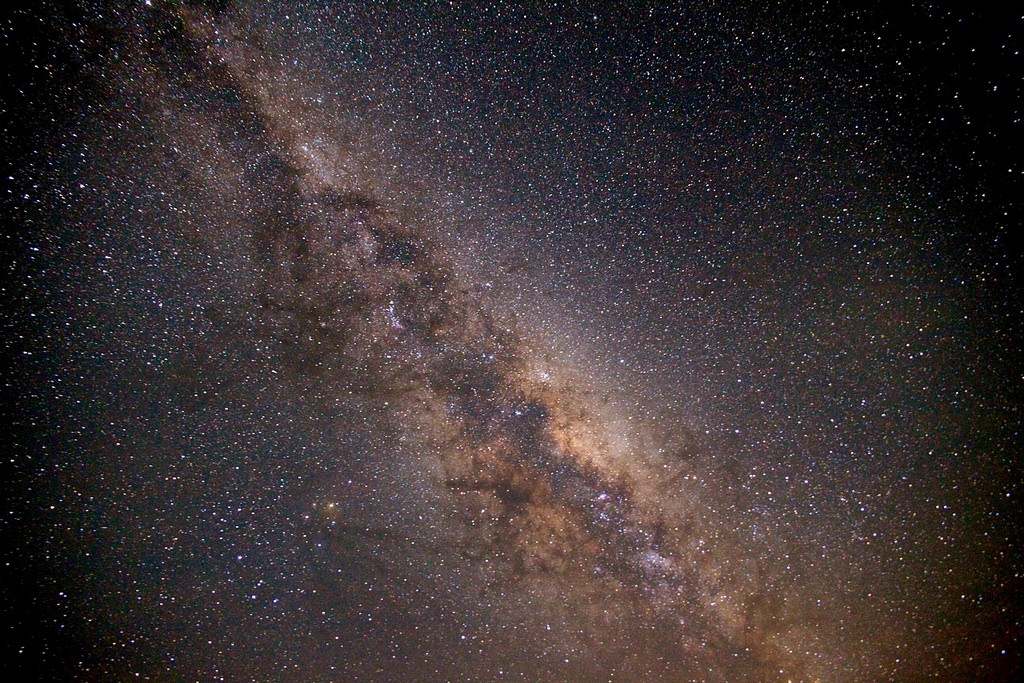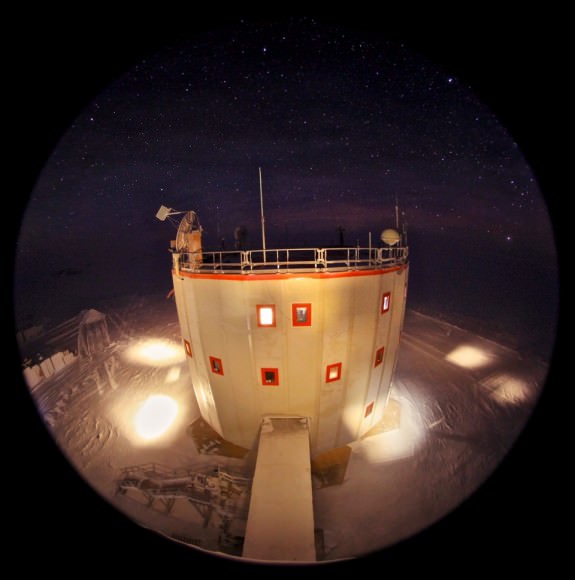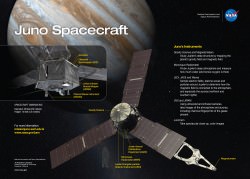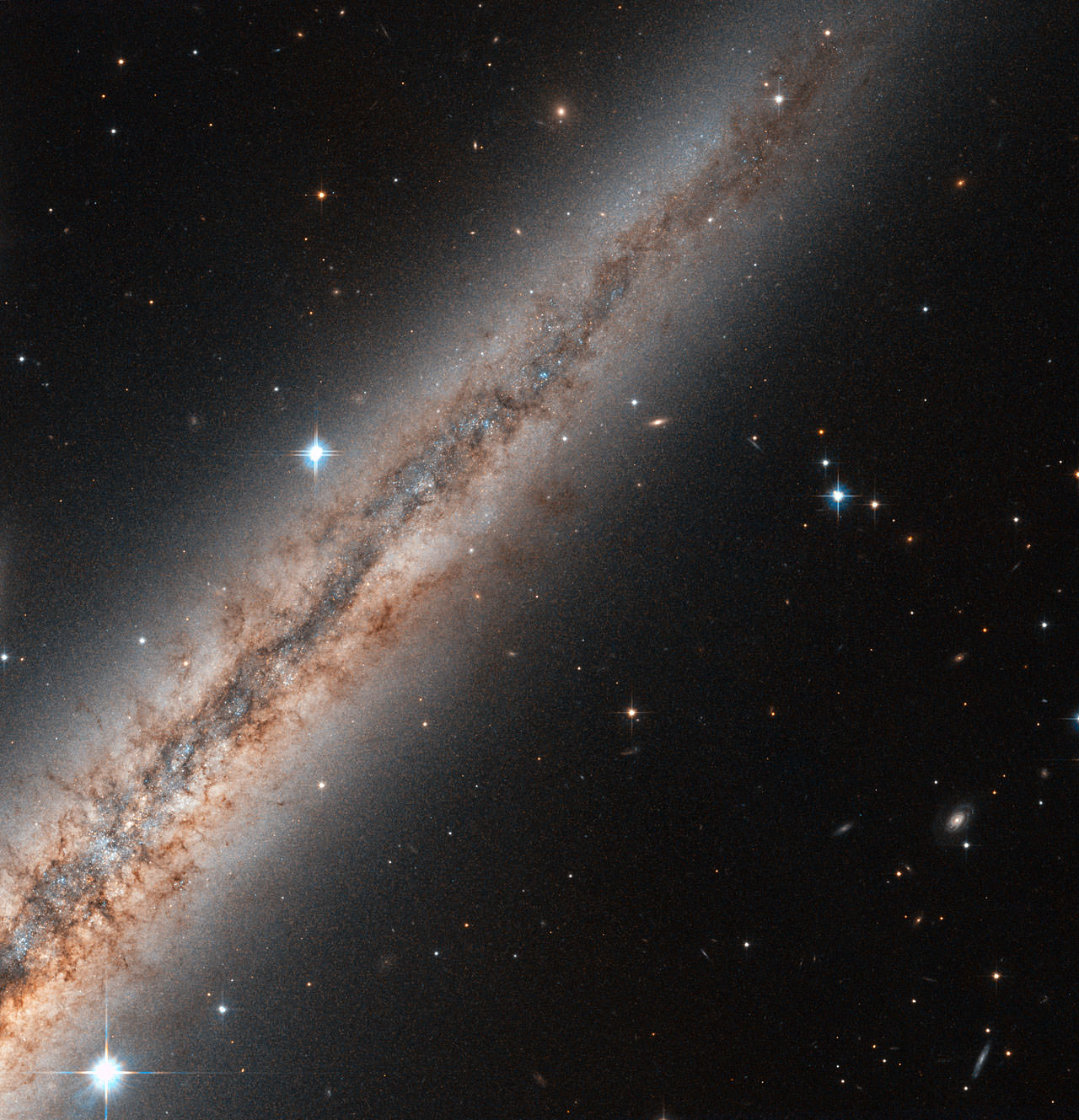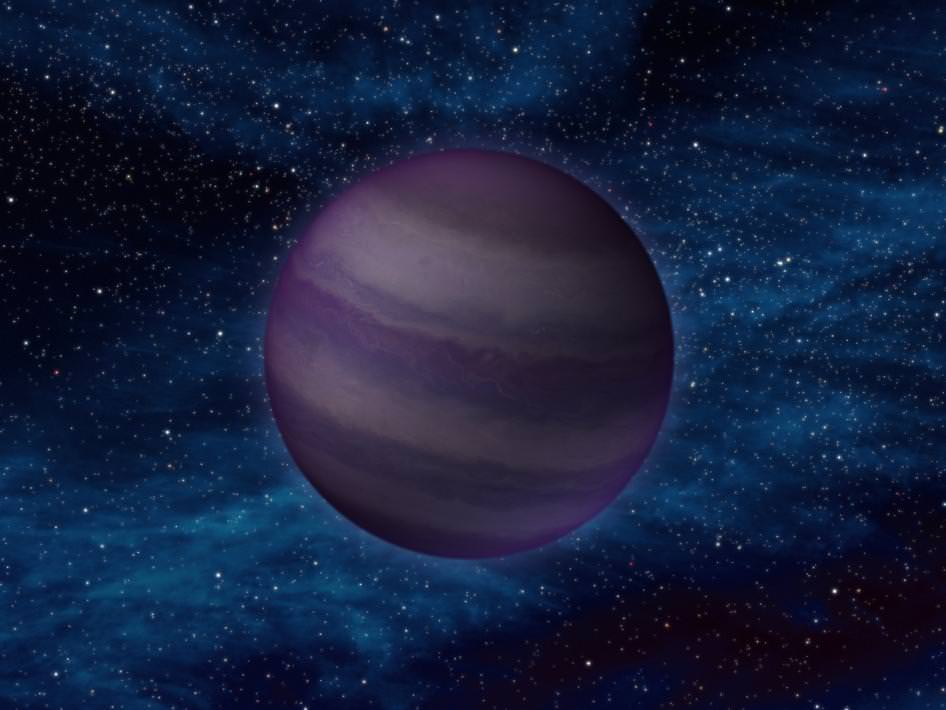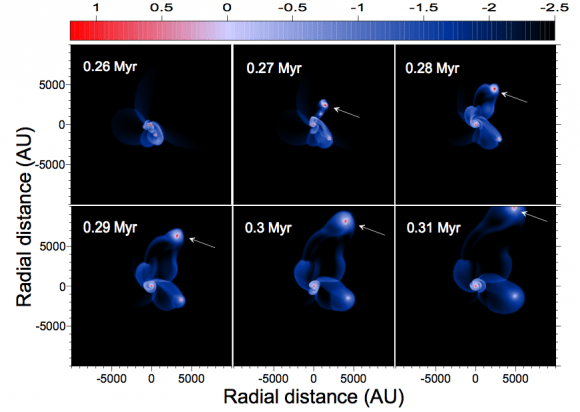Artist’s concept showing a dust disk around a binary system containing a white dwarf and a less-massive M (red) dwarf companion. (P. Marenfeld and NOAO/AURA/NSF)
Even though NASA’s Wide-field Infrared Survey Explorer spacecraft — aka WISE — ran out of coolant in October 2010, bringing its infrared survey mission to an end, the data that it gathered will be used by astronomers for decades to come as it holds clues to some of the most intriguing and hard-to-find objects in the Universe.
Recently astronomers using WISE data have found evidence of a particularly curious disk of dust and gas surrounding a pair of stars — one a dim red dwarf and the other the remains of a dead Sun-sized star — a white dwarf. The origin of the gas is a mystery, since based on standard models of stellar evolution it shouldn’t be there… yet there it is.
The binary system (which has the easy-to-remember name SDSS J0303+0054) consists of a white dwarf and a red dwarf separated by a distance only slightly larger than the radius of the Sun — about 700,000 km — which is incredibly close for two whole stars. The stars orbit each other quickly too: once every 3 hours.
The stars are so close that the system is referred to as a “post-common envelope” binary, because at one point the outer material of one star expanded out far enough to briefly engulf the other completely in what’s called a “common envelope.” This envelope of material brought the stars even closer together, transferring stellar material between them and ultimately speeding up the death of the white dwarf.
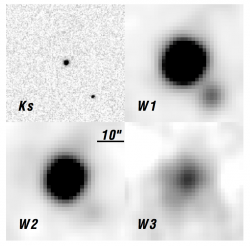 The system was first spotted during the Sloan Digital Sky Survey (hence the SDSS prefix) and was observed with WISE’s infrared abilities during a search for dust disks or brown dwarfs orbiting white dwarf stars. To find both a red (M) dwarf star 40-50 times the mass of Jupiter and a disk of dust orbiting the white dwarf in this system was unexpected — in fact, it’s the only known example of a system like it.
The system was first spotted during the Sloan Digital Sky Survey (hence the SDSS prefix) and was observed with WISE’s infrared abilities during a search for dust disks or brown dwarfs orbiting white dwarf stars. To find both a red (M) dwarf star 40-50 times the mass of Jupiter and a disk of dust orbiting the white dwarf in this system was unexpected — in fact, it’s the only known example of a system like it.
The entire mass of the dust (termed an infrared excess) is estimated to be “equivalent to the mass of an asteroid a few tens of kilometers in radius” and extends out to about the same distance as Venus’ orbit — just over 108 million kilometers, or 0.8 AU.
Why is the dust so unusual? Because, basically, it shouldn’t even be there. At that distance from the white dwarf, positioned just out of reach (but not terribly far away at all) anything that was within that zone when the original Sun-sized star swelled into its red giant phase should have spiraled inwards, getting swallowed up by the expanding stellar atmosphere.
Such is the fate that likely awaits the inner planets of our own Solar System — including Earth — when the Sun reaches the final phases of its stellar life.
So this requires that there are other sources of the dust. According to the WISE science update, “One possibility is that it is caused by multiple asteroids that orbit further away and somehow are perturbed close to the binary and collide with each other. [Another] is that the red dwarf companion releases a large amount of gas in a stellar wind that is trapped by the gravitational pull of its more massive white dwarf companion. The gas then condenses and forms the dust disk that is observed.
“Either way, this new discovery provides an interesting laboratory for the study of binary star evolution.”
See the team’s paper here, and read more on Berkeley’s WISE mission site here.
WISE launched into space on Dec. 14, 2009 on a mission to map the entire sky in infrared light with greatly improved sensitivity and resolution over its predecessors. From its polar orbit 525 kilometers (326 miles) in altitude it scanned the skies, collecting images taken at four infrared wavelengths of light. WISE took more than 2.7 million images over the course of its mission, capturing objects ranging from faraway galaxies to asteroids relatively close to Earth before exhausting the supply of coolant necessary to mask its own heat from its ultra-sensitive sensors.
Inset: Infrared images of SDSS J0303+0054. (NASA/JPL and John H. Debes et. al.)

